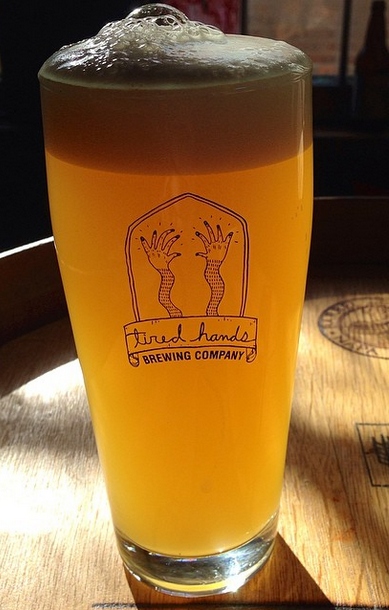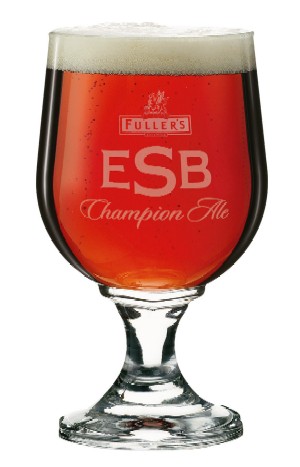 This batch is actually a repeat brew of #93 which I didn’t get around to logging, but which was a rousing success at the wedding reception I brewed it for last week.
This batch is actually a repeat brew of #93 which I didn’t get around to logging, but which was a rousing success at the wedding reception I brewed it for last week.
The funny part of that tale is that it was supposed to be quite a normal American Pale Ale (albeit extra pale, and replete with oats), but on the brew day I discovered that my dry yeast (American Ale) was dead. Like John-Cleese’s-parrot dead. So I panicked and pitched the only yeast I had enough of – which was Fantôme yeast from Zeitgeist. The result was excellent, although the yeast character wasn’t particularly obvious except in the (appropriately) dry finish.
This time I’ll use “Brett” Trois (WLP644) for similar effect.
My recipe was based on Ed Coffey’s clone of Tired Hands HopHands. Two distinctive things about the recipe: lots of rolled oats, and a massive dry-hopping rate. My aim (and presumably TH’s) was a hugely aromatic, not too bitter, very pale and creamy ale.
Again I chose to use Vienna as my base malt, because I like it very much. I hope it will add a nice biscuity hint to go with the oaty flavour.
For hops I’m using the last of my Galaxy (and lots of them) for that in-your-face tropical fruit punch, plus Vic Secret, which has subtle mango/guava fruity hints plus an almost piney character – as close as any Aussie hop gets to Simcoe.
Recipe for Sunshine:
- [MALT] 83% Vienna malt
- [MALT] 14% organic, steamed rolled oats
- [MALT] 3% acid malt
- [HOPS] 2.5g/L Vic Secret (flameout + 30min whirlpool)
- [YEAST] Brettanomyces Bruxellensis Trois (WLP644)
- [HOPS] 2.5g/L Vic Secret (dry hop)
- [HOPS] 3g/L Galaxy (dry hop)
Vital Statistics:
- original gravity: 1.046
- final gravity: 1.009
- bitterness: 35 IBU (estimate)
- colour: 9 ebc
- alcohol: 4.8% abv
Log:
Brewed 9th January. Good brew day, although final runnings were 1.002 (oops). The pH was 5.5, though, so hopefully this isn’t an issue.
Fermented around 21-22°C, which is the lower end of Trois’ range. Perhaps due to this, as well as the fact that I chose not to aerate at all, attenuation was very slow. After 14 days it was finally around 1.010, so I added dry hops.
This spent 8.5 days on the dry hops – partly because I was waiting (in vain) for them to drop out, and partly because I got lazy/busy – so the first couple of tastes have been intensely bitter and unbalanced.
After kegging, I put into fridge to chill down for 48 hours, then added gelatin and left for a few days (while sampling) before racking to serving keg to leave hops behind. (The initial kegs I filled had shortened dip tubes which allow this.)
5th February (29 days from brewing): Quite cloudy still, with some particles floating (not sure what). Incredible aroma of mango and grapefruit zest. Flavour is BITTER! Nice balanced beer, but the bitterness lingers and it *just* beyond enjoyable. I’m pretty sure this has more to do with the dry hopping rate/time, and I think/hope it will mellow after another week or so.
19th March (10 weeks from brewing): First keg (with gelatin) has been and gone; second keg (without gelatin) is almost out. This is a delicious beer. Almost everyone who’s tried is has loved it, although some found it too bitter (including me, on some days). Next time I’ll try adding some lactic acid at the beginning of the whirlpool (like with Sunburn). The bitter aftertaste might be in part due to the very low gravity of the final runnings (tannins increasing perception of bitterness), so I’ll definitely sort that out next time. The body is also quite low, so next time I’ll aim for FG around 1.011-12 to give it some balance.
 For what could be my last brew before our twins arrive, I decided a double brew was in order.
For what could be my last brew before our twins arrive, I decided a double brew was in order.
 Malt bill compared to the IPA: swapped half the Vienna for Pils, and used a lighter crystal malt (160 ebc vs. 230). The aim was to match the colour and “maltiness” of the IPA.
Malt bill compared to the IPA: swapped half the Vienna for Pils, and used a lighter crystal malt (160 ebc vs. 230). The aim was to match the colour and “maltiness” of the IPA. [MALT] 98% Vienna malt
[MALT] 98% Vienna malt